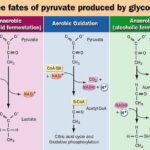O Level Biology 15 Views 1 Answers
Sourav PanLv 9November 3, 2024
Identify examples of asexual reproduction
Identify examples of asexual reproduction
Please login to save the post
Please login to submit an answer.
Sourav PanLv 9May 15, 2025
Asexual reproduction is a process by which organisms produce offspring without the fusion of gametes, resulting in genetically identical clones of the parent. Here are some notable examples of asexual reproduction across different organisms:
1. Binary Fission
- Description: This method involves the division of a single organism into two equal parts, each becoming a new individual.
- Examples:
- Bacteria: Such as Escherichia coli.
- Protozoans: Like Amoeba and Euglena.
2. Budding
- Description: A new organism develops from an outgrowth or bud on the parent organism, which eventually detaches.
- Examples:
- Hydra: A freshwater cnidarian that reproduces through budding.
- Yeast: Certain species of yeast, such as Saccharomyces cerevisiae, also reproduce by budding.
3. Fragmentation
- Description: The parent organism breaks into fragments, and each fragment can develop into a new individual.
- Examples:
- Planaria: A type of flatworm that can regenerate lost body parts.
- Sea Stars (Starfish): Can regenerate from broken arms.
4. Regeneration
- Description: Involves the regrowth of lost body parts, which can lead to the formation of a new organism.
- Examples:
- Lizards: Can regrow their tails after losing them.
- Echinoderms: Such as sea cucumbers and starfish.
5. Parthenogenesis
- Description: A form of asexual reproduction where an egg develops into an individual without fertilization.
- Examples:
- Hammerhead Sharks and Blacktip Sharks: Have been observed to reproduce parthenogenetically in captivity.
- New Mexico Whiptail Lizard: An all-female species that reproduces through parthenogenesis.
6. Vegetative Propagation
- Description: Involves the growth of new plants from vegetative parts such as roots, stems, or leaves.
- Examples:
- Sugarcane and Potatoes: Commonly propagated through tubers or cuttings.
- Strawberry Plants: Use runners to produce new plants.
7. Spore Formation (Sporogenesis)
- Description: Involves the production of spores that can develop into new individuals under favorable conditions.
- Examples:
- Fungi and Mosses: Produce spores for reproduction.
- Algae: Certain types can reproduce via spores.
0
0 likes
- Share on Facebook
- Share on Twitter
- Share on LinkedIn
0 found this helpful out of 0 votes
Helpful: 0%
Helpful: 0%
Was this page helpful?




